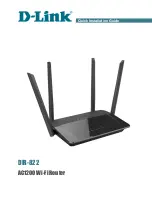
Chapter 8: WAN Cell Switching
In Depth
WAN switching is defined as the process of forwarding data traffic across a wide area network. WAN
switching uses cell relay technology to multiplex all network traffic across WAN trunk links without a
predefined timeslot for each type of connection. Cell relay networks use small, fixed−length packets called
cells to send control information in a header attached to the user’s data. Using a common cell format for the
encapsulation and transport of all network traffic, voice, video, and data over the WAN results in simplified,
efficient, and quick routing and multiplexing of data.
These cell relay networks provide for very high throughput, short delays, and very low error rates. The
industry standard for cell switching at Layer 2 is Asynchronous Transfer Mode (ATM) and LAN Emulation
(LANE).
ATM was developed by the ATM Forum, which is part of the International Telecommunications Union
Telecommunication Standardization Sector (ITU−T). Cisco—which is a leading member and one of the
original founding members of the ATM Forum LAN Emulation Sub−Working group—has implemented
LANE in most of its Core layer products.
The following Cisco WAN switches support ATM:
BPX 8600 series wide area switches (8620, 8650, 8680)
•
IGX 8400 series wide area switches (8410, 8420, 8430)
•
MGX 8220 edge concentrator
•
MGX 8800 wide area edge switch
•
These switches, which are also called nodes, fall into three Cisco WAN switched architectures:
Feeder nodes—The MGX 8220 concentrator shelves, which are used to aggregate narrowband UNI
connections and multiplex traffic onto a single trunk link to a BPX switch or routing node.
•
Hybrid nodes—The IGX 8400 and the MGX 8800 switches, which are used to aggregate UNI
connections. These switches are also used to route and switch packets to the trunks that lead to the
final destination.
•
Routing nodes—The BPX switches that actually render the switching decisions and forward packets
to appropriate trunk links.
•
In the Cisco LAN and Catalyst switching line, you can use the Cisco Catalyst 5000 ATM module or the
LightStream series of switches for ATM cell switching. The LightStream series of switches is covered in
Chapter 9.
ATM Overview
ATM is a cell−based networking technology designed to be a high−speed, efficient method of supporting
multiple types of traffic, including voice, data, and video. ATM’s characteristics allow it to effectively support
today’s networking requirements.
Some of the major benefits of ATM are:
Efficient bandwidth—ATM efficiently supports most transmission requirements of the network and
allocates bandwidth as necessary. One of the primary reasons ATM is such a great protocol is its
ability to accomplish this task without any manual intervention.
•
160
















































